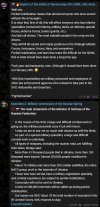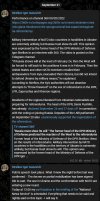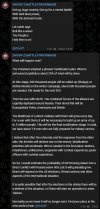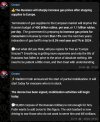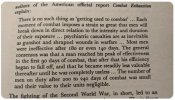Anatoliy Federenko pointed to a large crater. Inside it were the remains of his kitchen: fridge, washing machine, crockery. In July a large Russian bomb landed on his home in the village of Prudyanka. It levelled an extension. “We are civilians, not Ukrainian military,” he said, standing on a pile of debris. The other half of his house survived, with fruit trees and a vigorous pumpkin patch.
For six months Prudyanka went through what you might call hell. It was a mere three kilometres away from the frontline and was the last Ukrainian-controlled settlement north of the city of Kharkiv. In February the Russian army crossed the border and advanced as far as Tsupivka, the next village up the road. Since then most of Prudyanka – population 3,500 – has been damaged or destroyed.
Federenko returned to his shattered home on Wednesday to pick up a few possessions. Earlier this month, Ukraine’s armed forces launched a stunning counter-offensive in the north-eastern Kharkiv region. They recaptured Tsupikva, as well as dozens of other towns and cities. It was a humiliating moment for the Kremlin and a possible turning point in the war.
The explosions, though, didn’t stop. They merely moved a little farther north. “You hear bangs all the time. I don’t know what they are,” Federenko admitted, as a percussive crash sounded in the near distance. Kremlin guns are now firing from inside Russian territory. Every few minutes they fling shells at newly liberated areas, including the border town of Kozacha Lopan.
Many fled. But some remained on both sides of this rural frontline, living in dire conditions without electricity, water, or a phone connection. Nikolai Vakula and his wife, Zinaida, stayed in Tsupikva under Russian occupation, with 120 others, from a prewar population of 600. Twenty people lived in the neighbouring hamlet of Lobanivka, and seven in tiny Tokarivka, Vakula said.

‘You hear bangs all the time’: life in Ukraine’s newly liberated towns
Those returning, and those who never left, are weighing their fortunes. ‘We don’t have power,’ one says. ‘But we are alive’
Uusi palanen henkilötarinaa. En usko että örkit edes ymmärtävät tätä kulttuurisotaa.“It was a humiliating time. The Russians broke into houses where the owners had gone and took everything,” he recalled. “I talked to them. There were young guys from Chechnya and Buryatiya in Siberia. And maybe South Ossetia. The worst were the soldiers from the Luhansk and Donetsk People’s Republics. They were swine. You could not answer them back.”
Vakula said a Donetsk separatist fighter who went by the nickname of “Count” punched him in the face, sending him reeling. “He called me an old pederast. I explained I was 67 and had had two heart attacks. He said every fourth Ukrainian was a Nazi. Putin has zombified an entire nation.” The pensioner added: “I have relatives in Russia. “They rang me and said: ‘Hang on. We’re coming to liberate you’. I broke off contact.”
The centre of Prudyanka was a crazy flattened mess. A Russian bomb had landed on the village’s Soviet war memorial. It knocked a chunk out of a statue of a grieving mother, leaving a hole in her grey chest and lopping off several fingers. A piece of shrapnel had obliterated the initials of one of the soldiers who had fallen in battle. Only his surname was left: Onoprienko.
It was a similar story in nearby Slatyane, once a flourishing urban community of 7,000 people. Its railway station was on the route between Kharkiv and Belgorod. Electricity pylons had fallen down around it. On the wall of the platform waiting room someone had written: “Welcome to Ukraine, bitch”. Across the tracks, the shopping mall had been turned into a tangle of broken metal.


 Pohdin vain tässä että mikä on rysyn ajatus tämän kaiken lopputulemasta. Ts. Nyt mobilisoidaan ja sitten soditaan helvetisti... Ja mitä sitten, mitä saavutettiin ja miten siitä siirrytään rauhaan. Eli siis putteli on sitonut nyt itsensä tähän sotaan lopullisesti, vaikka käytännössä mitään voittoa ei koskaan ole edes ollut saavutettavissa... Olen täällä aikaisemminkin sanonut mutta tyhmyys tuolla itärajan takana on rajatonta.... Edit. Ja toki siis kaikki vaan sen takia että puttelin piiri pysyisi vallassa...
Pohdin vain tässä että mikä on rysyn ajatus tämän kaiken lopputulemasta. Ts. Nyt mobilisoidaan ja sitten soditaan helvetisti... Ja mitä sitten, mitä saavutettiin ja miten siitä siirrytään rauhaan. Eli siis putteli on sitonut nyt itsensä tähän sotaan lopullisesti, vaikka käytännössä mitään voittoa ei koskaan ole edes ollut saavutettavissa... Olen täällä aikaisemminkin sanonut mutta tyhmyys tuolla itärajan takana on rajatonta.... Edit. Ja toki siis kaikki vaan sen takia että puttelin piiri pysyisi vallassa...



